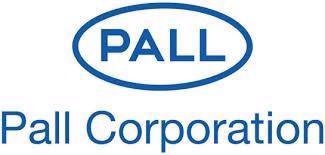Here is a hypothetical situation: your operator filters a 2018 Merlot on Friday. Then, another operator on Monday filtering the same Merlot has significantly lower output.

Image Credit: Stokkete/Shutterstock.com
The difference is noticeable but inexplicable. Is it possible that the machine was chemically cleaned over the weekend or that the cleaning did not work correctly?
Or is there a chance the operators used different settings on the machine or that the machine has an error? It is anybody’s guess. What is evident, however, is that the system was not running in the most efficient manner for a successful filtration process.
In this hypothetical situation, one possible solution is to instruct each operator to manually log their activities. While this improves the process, this method of data collection is both subjective and open to interpretation.
The data’s subjectivity is based on the person collecting it, making it complicated to obtain and understand process data.
This makes it difficult to identify useful insights into the filtration process, meaning that it is complicated to identify if the operator or sub-par machine performance is the root cause of the processing inefficiencies.
There are many general reasons that wineries have obstacles to gathering data on operational and machine performance, including:
- Required expertise for determining optimal settings and analyzing trends.
- The archiving of data following collection.
- Equipment and personnel required for monitoring data involving:
- Run time
- Flow rate of wine filtration
- Water flow rate following cleaning
- Human-collected data has no guarantee of being consistent or accurate.

Image Credit: Zhu Difeng/Shutterstock.com
Smart machines and the Internet of Things (IoT) become important at this point in the discussion. IoT is the name for networks of sensors and devices that collect and share data with each other.
In the example of wineries, the filtration system’s sensors allow data collection relating to uptime/downtime and temperature and flow rate.. IoT can also be used to track volumes of things including chemicals, wine and water.
By collecting data using IoT, it becomes easier for wineries to identify root causes and key problems regarding the wine filtration process. Leveraging the IoT provides wineries the ability to scale from individual machines at sites across the globe, all the way down to one specific machine at one specific site.
Corrective actions can be taken more quickly when problems are able to be identified faster; this assists in ensuring more consistent and effective outcomes.
Returning to the hypothetical situation above, instead of operators each manually recording flow rates and cleaning times, IoT enables that information to be collected, stored and accessible in the cloud.
Previously, operators may have begun filtration for a wine at too fast of a flow rate, not realizing that while a instantaneous high flow rate is efficient, the speed fouls membranes more quickly and results in more frequent stops to clean.
Now the operation must stop the system between every run for cleaning, and this leads to time lost and unnecessary wine loss; requiring more downtime and less filtering which equates to a loss of revenue and time.
Using a wine filtration system connected to the cloud through IoT means the system automatically collects data and there are no longer performance variances in data collection between operators.
This increased information can help to better predict routine maintenance requirements, expedite emergency service and detect problems. Additionally, some machines come with more advanced, ‘smarter’ capabilities that can improve overall operational efficiency and machine performance by automatically adjusting its own settings.

Image Credit: Al'fred/Shutterstock.com
Pall Food & Beverage has seen wineries optimize their wine production three-fold through the use of such a wine filtration machine, resulting in a significant reduction of operating costs.
Winemakers who find themselves overwhelmed at the thought of collecting and analyzing the correct data can be aided by having a machine that optimizes itself based on the correct data. This new technology makes guesstimating and collecting data manually a thing of the past.
IoT changes the landscape of business through the use of smart machines and connectivity to the cloud. With this type of technology and access to an abundance of data winemakers can now improve their business and bottom line.

This information has been sourced, reviewed and adapted from materials provided by Pall Corporation.
For more information on this source, please visit Pall Corporation.